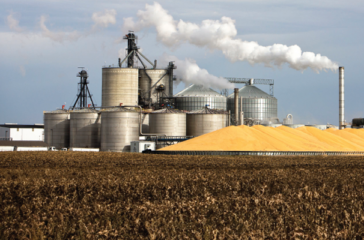Biofuels manufacturing found to be a significant source of hazardous air pollution
By Dana Drugmand
Hazardous air pollutants emitted in the manufacturing of biofuels is nearly as bad as air pollution stemming from oil refineries, and for several types of dangerous pollutants such as formaldehyde the emissions from biofuel production are far greater, a new report finds.
 EWG
EWG